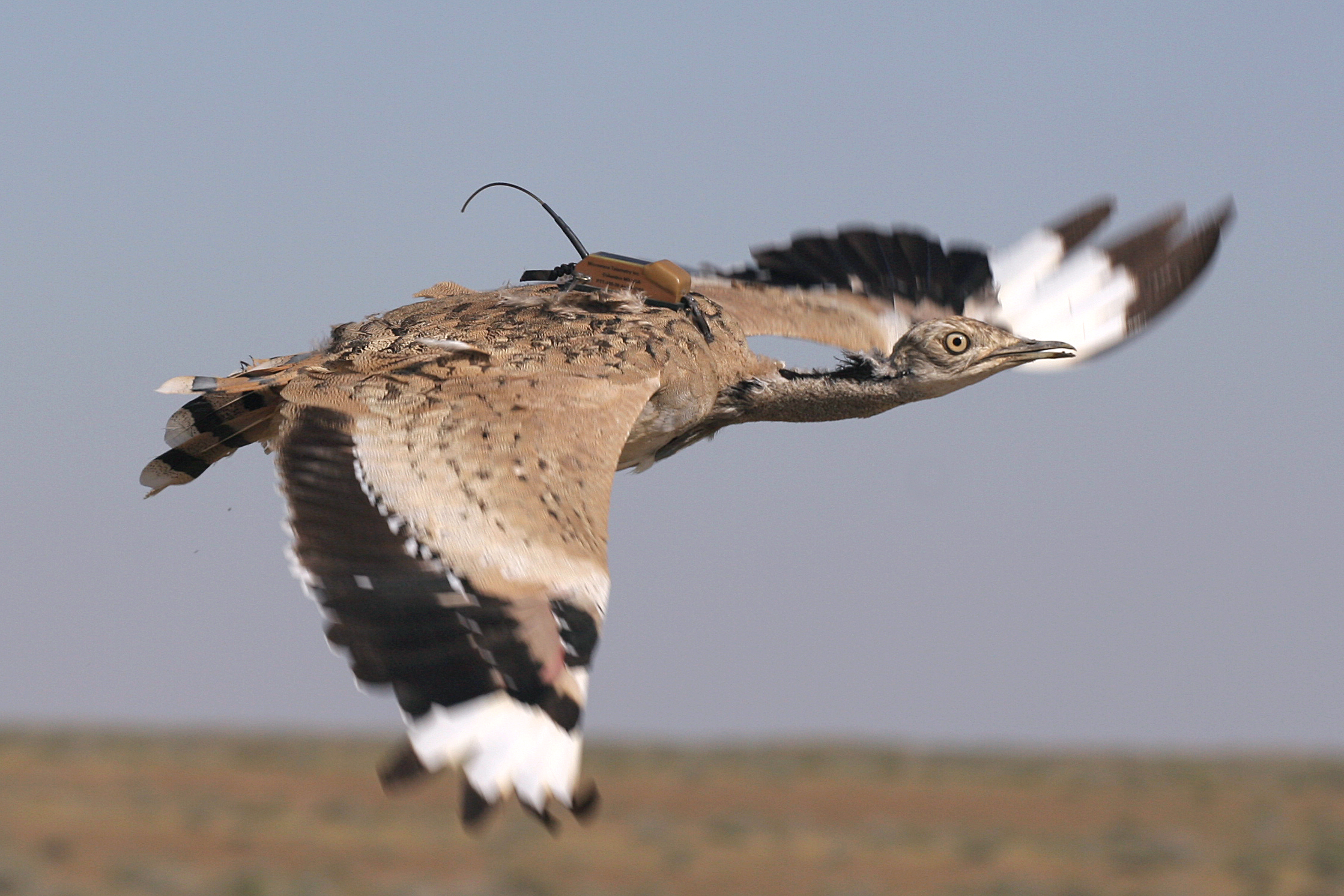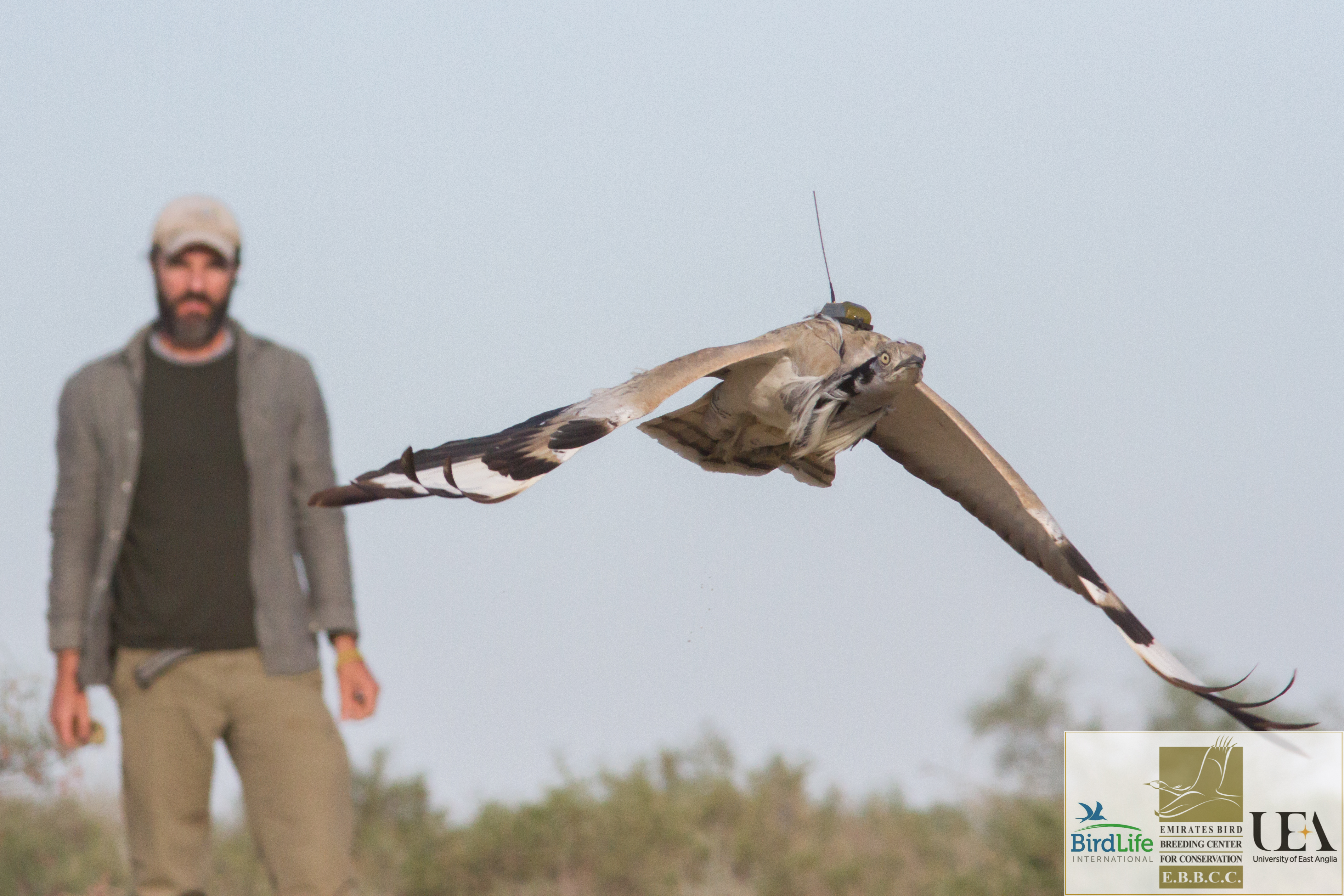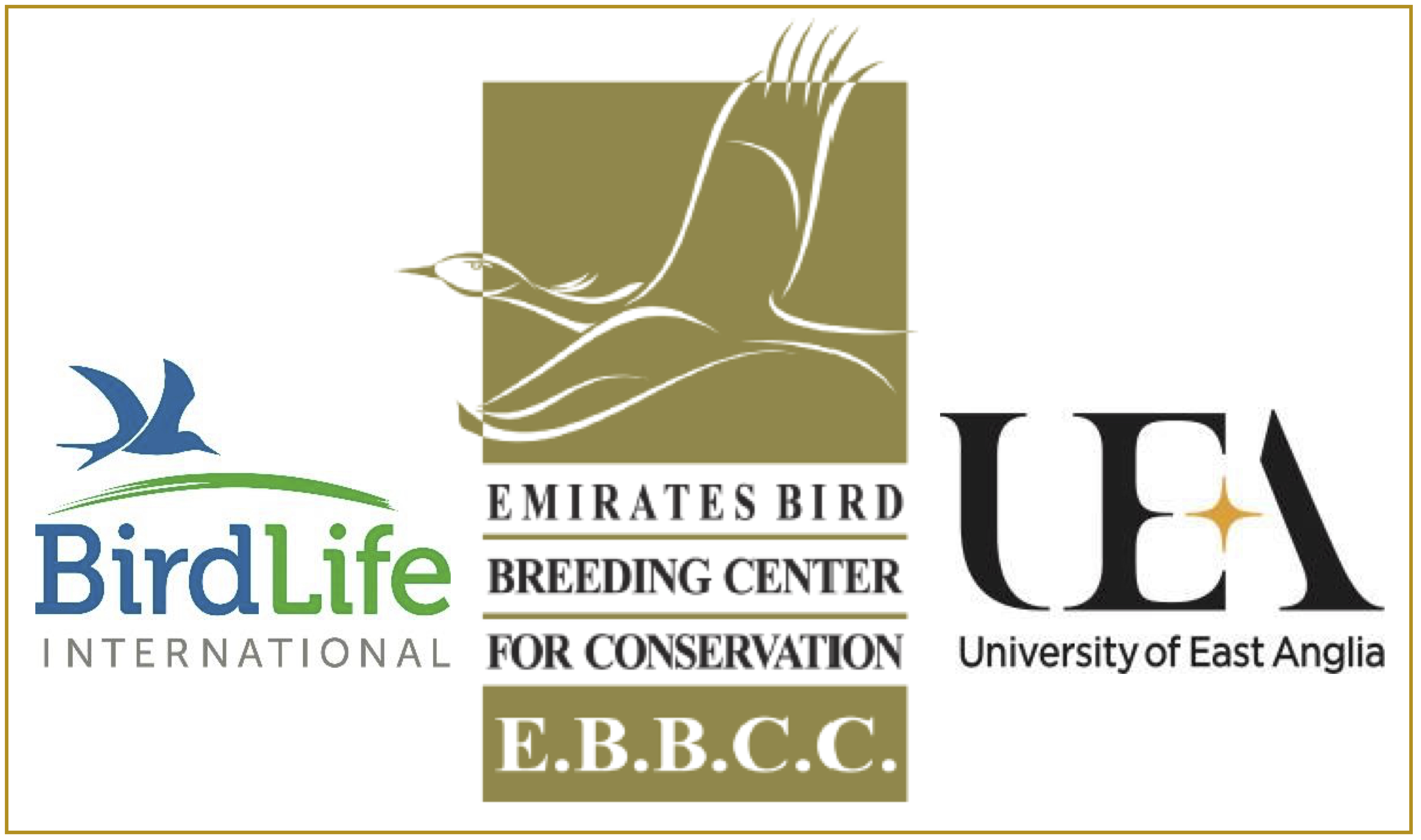← Back
Satellite-tracking to create the demographic evidence-base for the sustainable management of hunted Asian Houbara

As Robert J. Burnside of the University of East Anglia explains in his presentation at the European User Conference on Argos Wildlife, the migratory Asian Houbara Chlamydotis macqueenii is threatened (IUCN Vulnerable) and declining primarily due to over-exploitation by Arab falconers. Maintaining these populations is vital not only to the conservation of the species, but also to the continuation of the cultural practice of falconry, which has significant geo-political and economic importance in many range states. To date, the primary intervention has been to release captive-bred birds, and hunting appears to have continued in an unregulated manner under the assumption that such releases compensate for the losses to the wild breeding stock.

Robert J. Burnside
Modeling the results of sustainable hunting
We have taken an evidence-based approach to sustainable hunting to understand how captive breeding and release can could contribute to population stabilisation under scenarios of regulated hunting. Using a powerful combination of fieldwork and tracking with Argos satellite tags we quantify the demography (productivity and survival rates) and migration strategies of both wild and captive-bred birds to develop a stochastic population model. We examine if the wild study population in Uzbekistan has a surplus that can be hunted sustainably, and then model different scenarios of hunt offtake, release sizes and the consequences for the population growth rate. Results suggest that wintering rates of hunting and poaching of wild birds are currently unsustainable. Moreover, low recruitment rates of captive-released birds mean that high-volume releases are needed to offset these mortalities, while further releases would be needed to create a surplus for sustainable hunting.
Highlighting the risks of continuing falconry
Relying solely on captive-breeding requires releases of a scale that risk overwhelming wild populations with potentially domesticated stock. To avoid the genetic erosion of the current wild stock requires hunters to accept scientifically determined quotas, and also requires coordinated transboundary conservation efforts across flyway states, that would limit the winter mortalities to a sustainable level.
Co-Authors: Dolman, Paul M., Collar, Nigel J.

